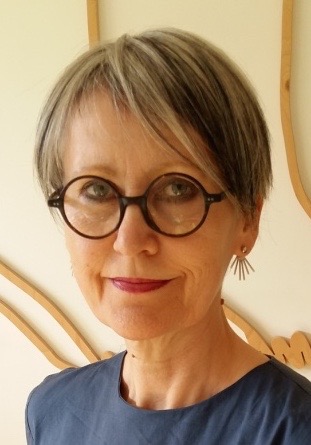Feeling Keenly, The Wonder In Ordinariness.
- Elise V Allan

- Jun 10, 2020
- 3 min read
first posted March 2018

“It's hard to believe, but it takes courage and fortitude, and often sudden suffering, to accept that we are ordinary. And then it takes humility and openness to discover the wonder waiting there.” Mark Nepo*
Unfortunately myths persist, that separate ‘creative people’ and ‘ordinary people’. I hear the myths being kept alive by those who feel that they are not real artists because of their ‘ordinariness’ - including some who work in the arts.
Much of the mythologizing centres on a pairing of suffering and martyrdom; yet there’s a vast difference between them.
Nepo goes on to write, “It's interesting that the root of the word suffer means ‘to feel keenly.’ Immediately, we are faced with a paradox: While feeling keenly is what opens us to suffering, feeling keenly is also what opens us to beauty, love, and joy… Once we try to separate the joy from the sorrow, it is no longer life, no longer essential.”
If being numb to sorrow means reducing our capacity for joy, love and beauty, learning to ride the waves is essential if we want to live creative lives.
Richard Stern, the novelist said, “The great thing about this kind of work is that every feeling that you have, every negative feeling, is in some way precious. It is your building material, it’s your stone, it’s something you use to build your work. I would say the conversion of the negative is very important. So I taught to myself what I try to teach my students who are becoming writers: don’t duck pain. It’s precious, it’s your gold mine, it’s the gold in your mine.” **
From the composer, Gustav Mahler, “What one makes music out of is the whole – the feeling, thinking, breathing, suffering human being.”
And the artist, Louise Bourgeois: "I have taken my memories into my arms and have soothed them."
If only we’d all grown up learning how to ride emotion. But I don’t think I know anyone who did, although I’ve met more than a few who have taken time to develop the ability. Many of us grow up feeling we have a choice between numbing out, gritting our teeth and ‘getting on with life’, or losing ourselves in misery; and will have developed an approach based on a mix of those. If we alternate between holding back emotions and drowning in painful feelings when the dam bursts, our resistance to ‘feeling keenly’ will grow.
Yet Jill Bolte Taylor, the neuroanatomist and speaker who survived a stroke, tells us, “..the life span of any particular emotion is only one and a half minutes. After that we have to revive the emotion and get it going again.”
If we were to hold this understanding - each emotion has a life span of only ninety seconds - it would be so much less threatening to our well being to keenly feel whatever comes our way. We did it naturally as babies. We might relearn it.
But the problem is that we love to tell ourselves stories about suffering and we repeatedly revisit and revive emotions that we find addictive. We begin to see pain as something that accumulates and builds identity – and an identity built on pain is one of martyrdom. If we succumb to the glamorous story about the martyrdom of the sacrificed artist, we have the artist who burns herself out, or the alcoholic writer. Mythologising and dramatising self-destructiveness for a role that might be imagined to offer creative possibilities limits our range, as it excludes whatever doesn’t support the myth. It’s a two dimensional approach to life.
It’s in the extraordinariness of real lives that there’s immense multi dimensional variety and wonder. But numbed out, or lost in a two dimensional story, we miss it. Let me be shaken and woken up by Matisse’s cut-outs, Mahler’s symphonies or Annie Dillard’s writing…
“Why does death so catch us by surprise, and why love? We still and always want waking. We should amass half-dressed in long lines like tribesman and shake gourds at one another, to wake up; instead we watch television and miss the show.” Annie Dillard***
* Mark Nepo, The Exquisite Risk: Daring to Live an Authentic Life.
**interviewed by Mihaly Csikszentmihalyi in Creativity: Flow and The Psychology of Discovery and Invention
***Annie Dillard, The Abundance
Image: You Make my Heart Sing, by Elise V Allan




Comments